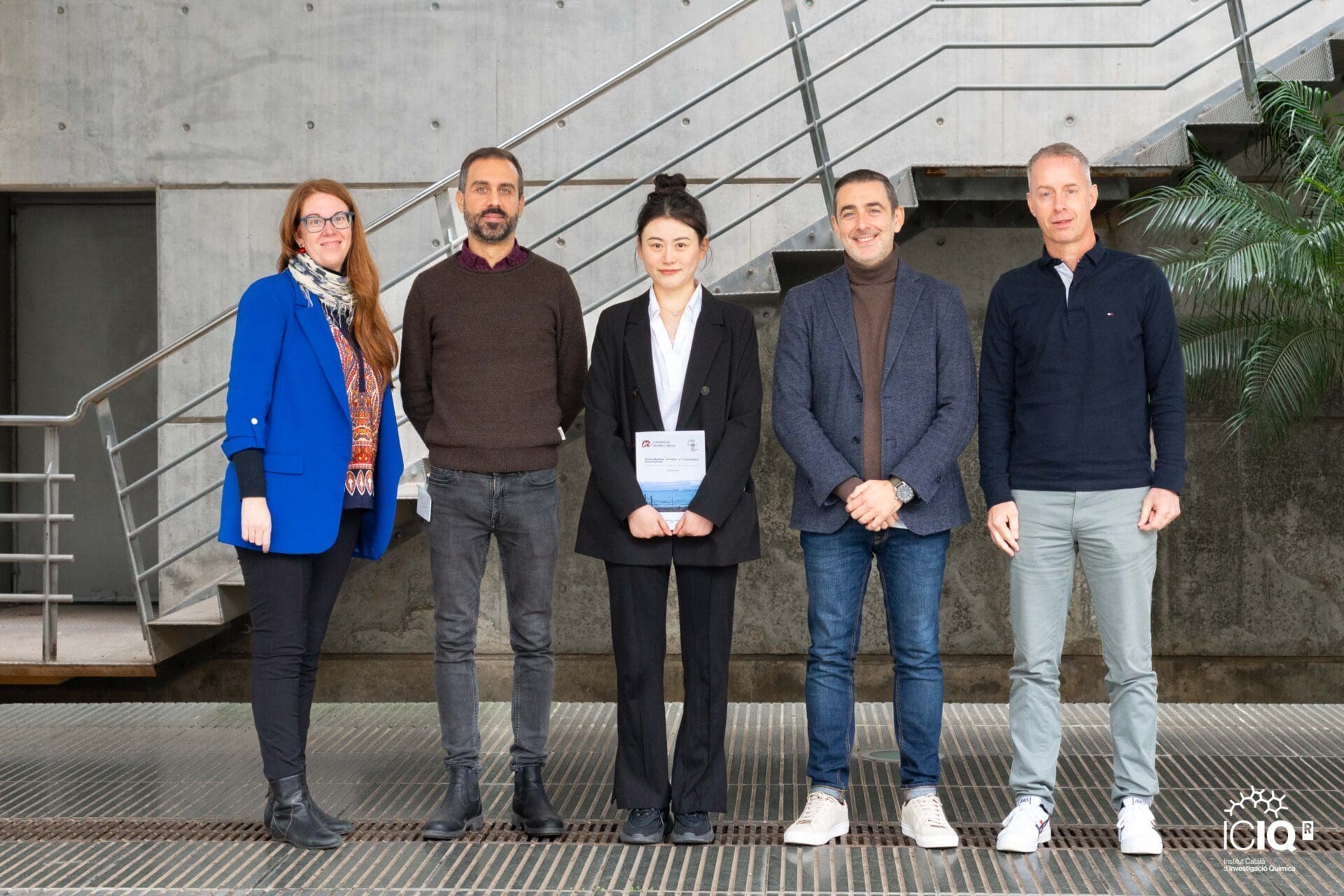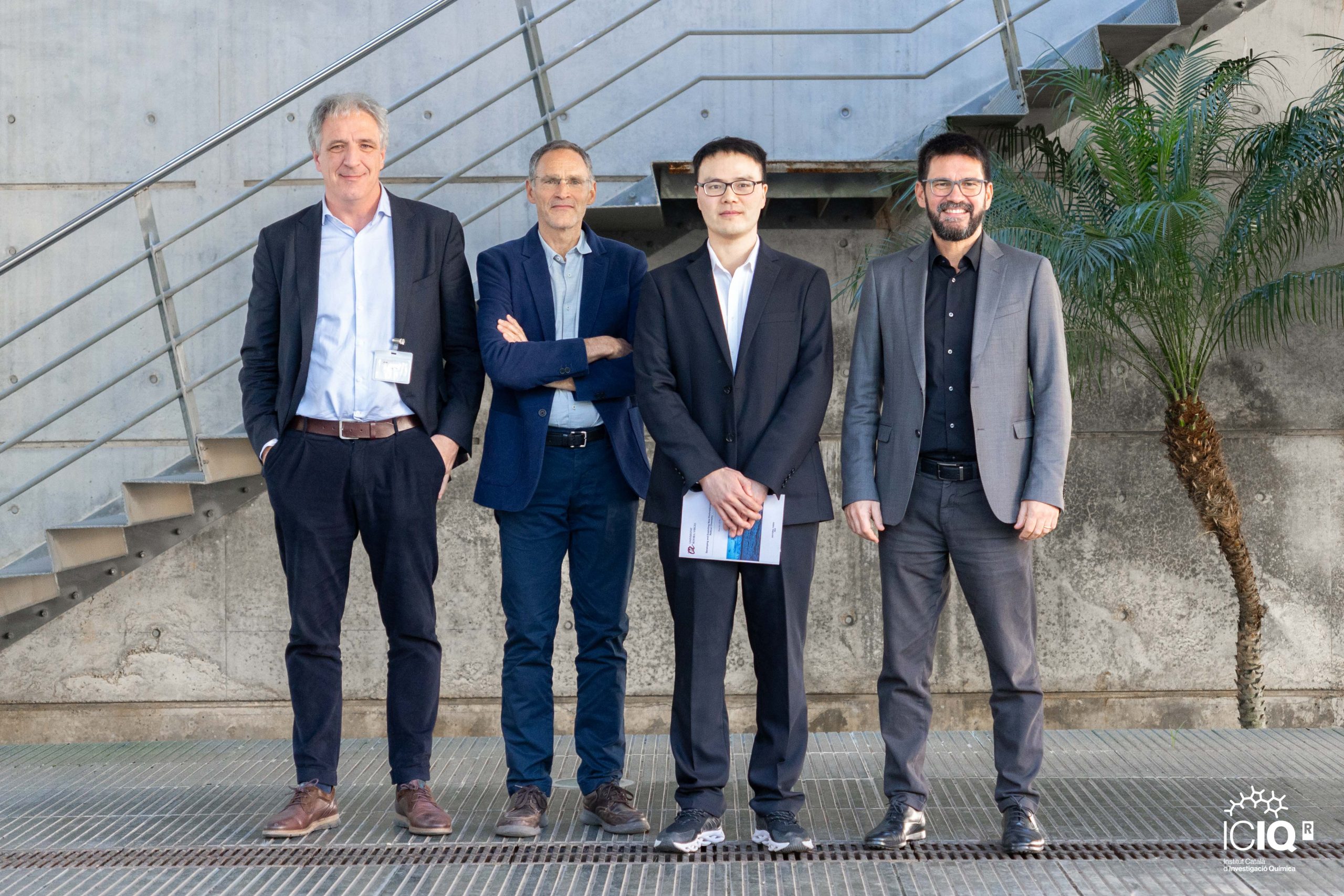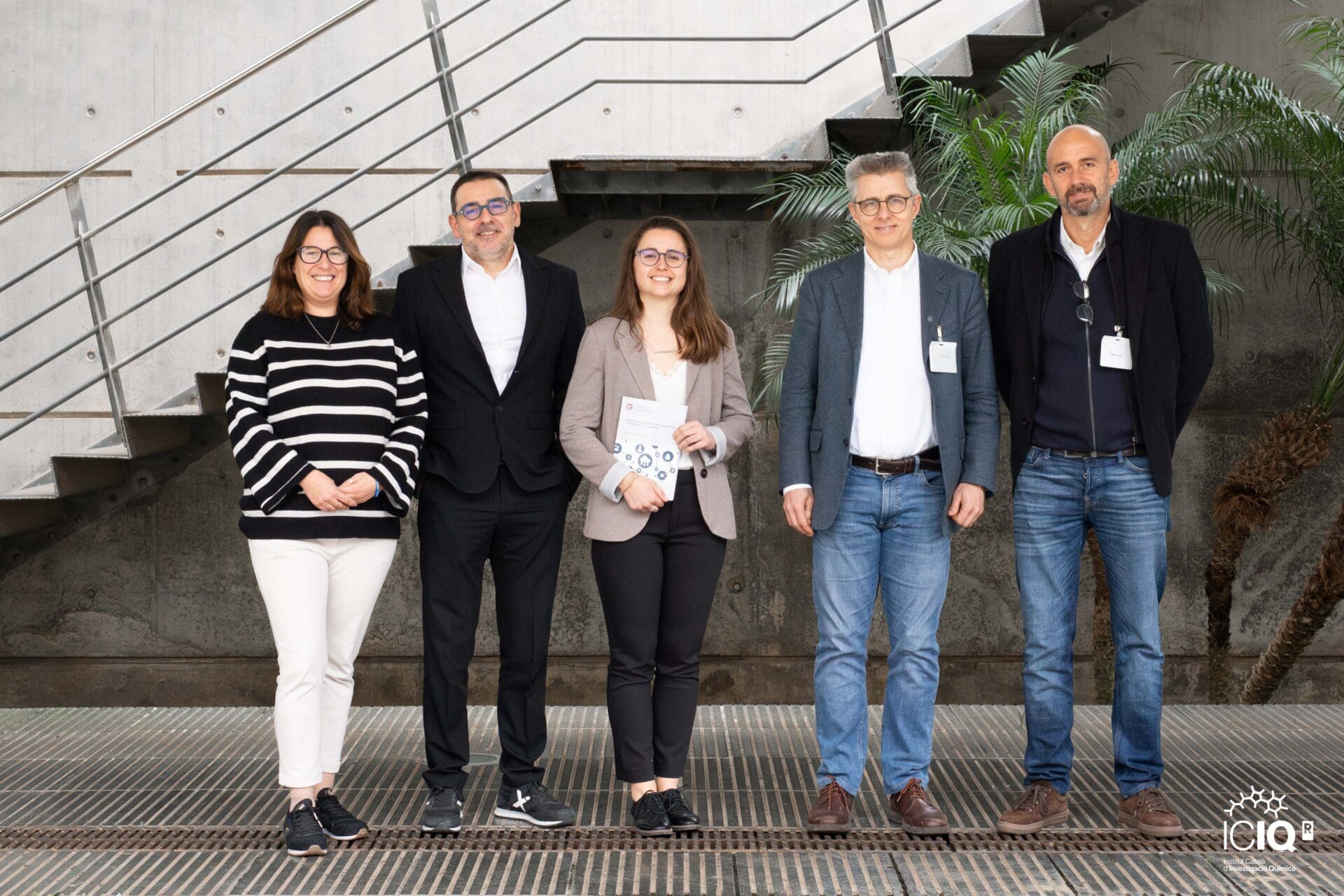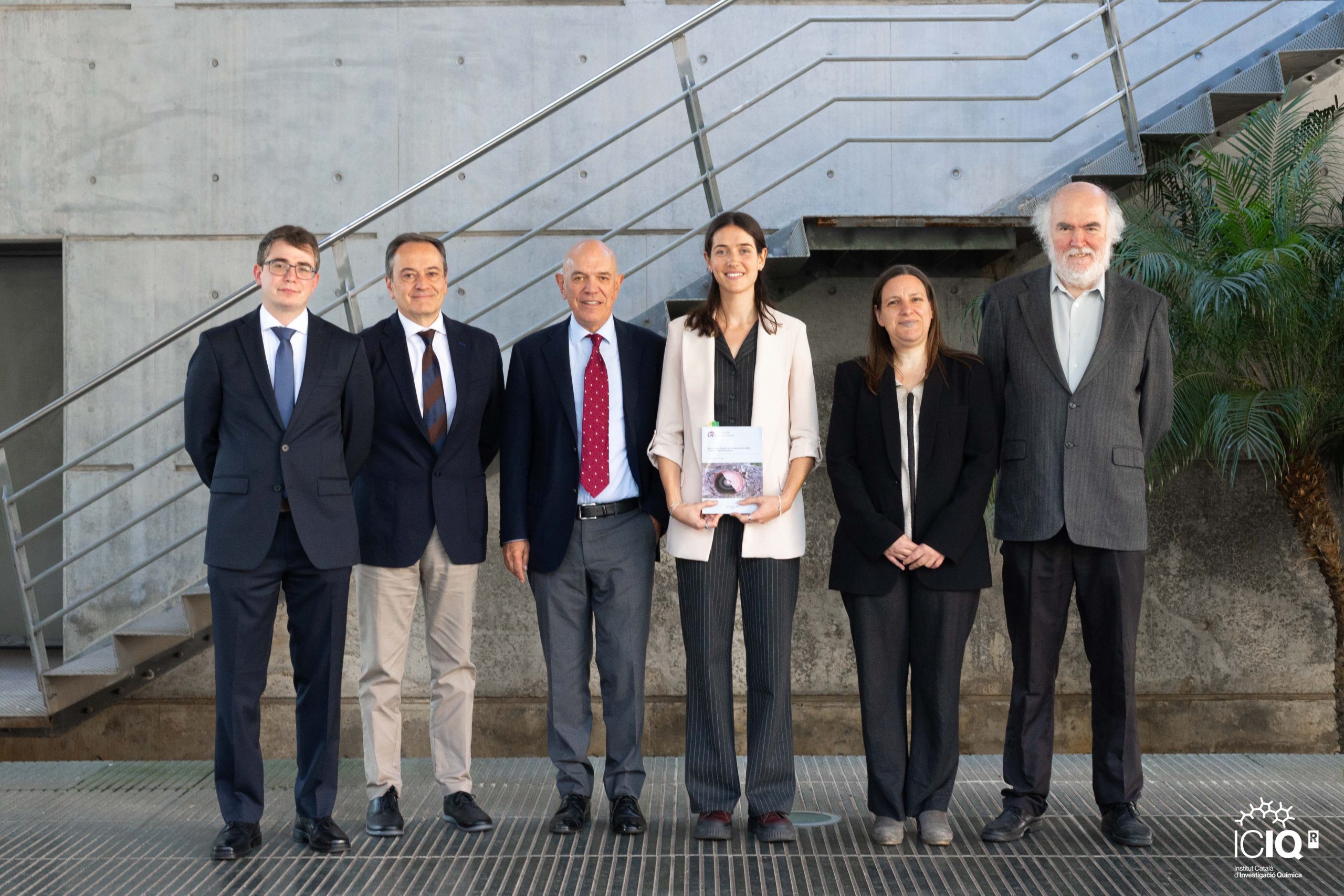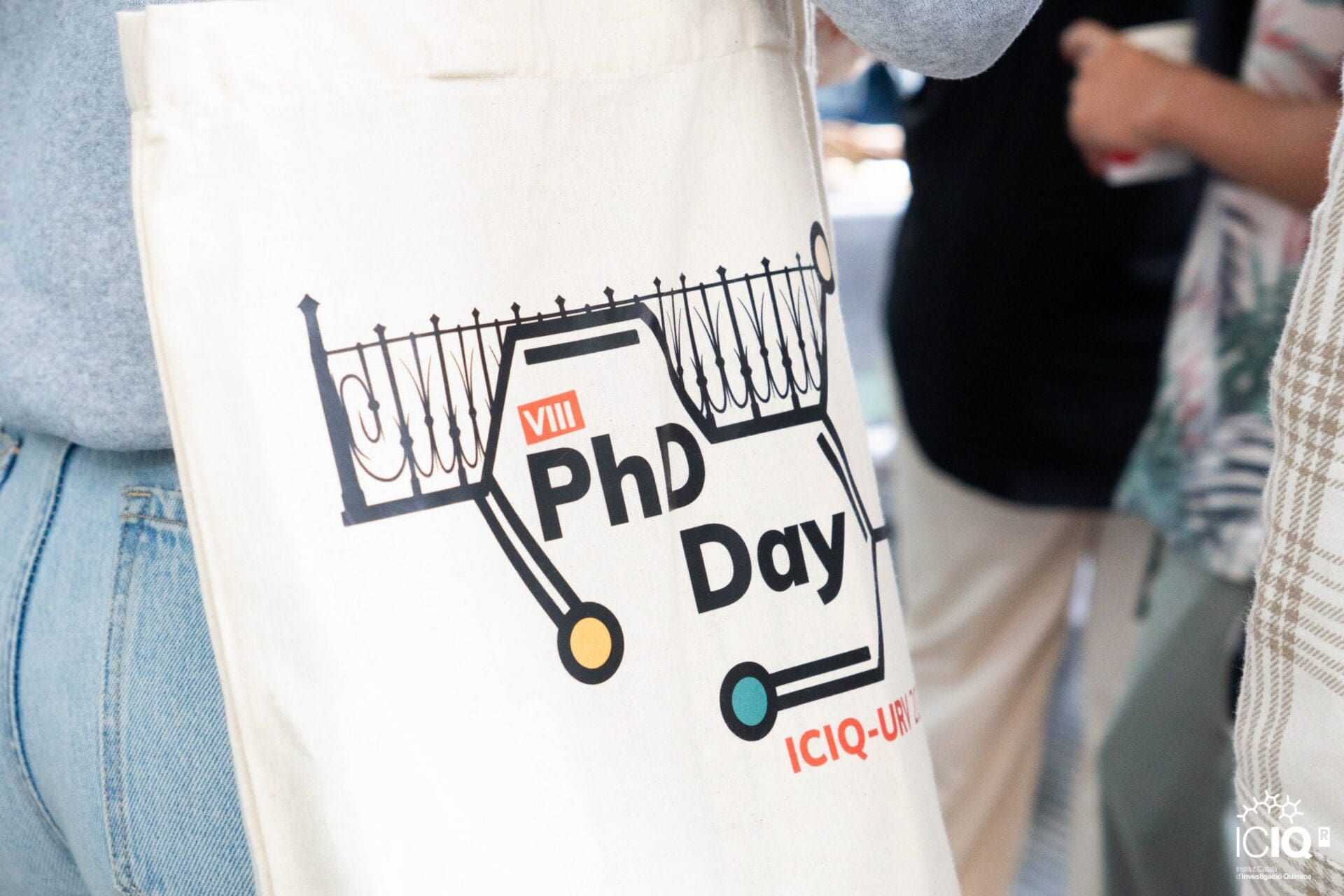Congratulations Dr. Fakhrnasova!
Dina Fakhrnasova, PhD student under the supervision of Dr. Atsushi Urakawa, Dr. Ricardo J. Chimentão and Prof. Francisco Medina, has defended her PhD Thesis entitled ‘Rational and Statistical Approaches in Enhancing Yield of Ethylene Carbonate in Urea Transesterification with Ethylene Glycol’ (assigned to the Higher Technical School of Chemical Engineering of the Universitat Rovira i Virgili) publicly on February 10th at the ICIQ auditorium.
The members of her evaluation committee were: Prof. Davide Ferri (Paul Scherrer Institute), Prof. Mayra García (Unviersitat Rovira i Virgili) and Prof. Anabela Valente (University of Aveiro).

Dr. Fakhrnasova with two of her supervisors, Dr. Atsushi Urakawa and Prof. Francisco Medina, and the evaluation committee
Abstract:
This work employs a rational approach to improve material properties of metal oxide catalyst for urea transesterification with ethylene glycol (EG) to ethylene carbonate (EC) and a statistical approach to maximize the yield of the desired product. For the rational approach, single and mixed metal oxides consisting of metal cations (Zn, Mg, Al, Fe) were synthesized and tested in every comprising reaction step identified in this work. The concentration profiles of the reactants/products and kinetics parameters were obtained by means of IR monitoring using a dip-in ATR-IR probe with subsequent multivariate analysis (MCR). The roles of acidity and basicity at each reaction step have been unambiguously clarified from the relations between acidity and basicity of the materials and the reaction kinetics/performance. Molecular insights into the influence of surface acidity/basicity on reaction selectivity were gained by in situ ATR-IR spectroscopy of catalytic solid-liquid interfaces assisted by MCR to sensitively monitor active surface chemical species. It was found that a well-balanced amount of acidic and basic sites is critical in achieving high EC yield with high EC selectivity. Fine tuning of materials showed that the mixed metal oxide consisting of Zn and Fe at 3:1 atomic ratio was the optimum catalyst. Furthermore, design of experiments (DoE) approach was used to statistically identify critical reaction parameters and optimize them for the best Zn- and Fe- containing catalyst, successfully identifying the experimental conditions where EC productivity and selectivity are maximized.
Related news

Let's create a brighter future
Join our team to work with renowned researchers, tackle groundbreaking
projects and contribute to meaningful scientific advancements





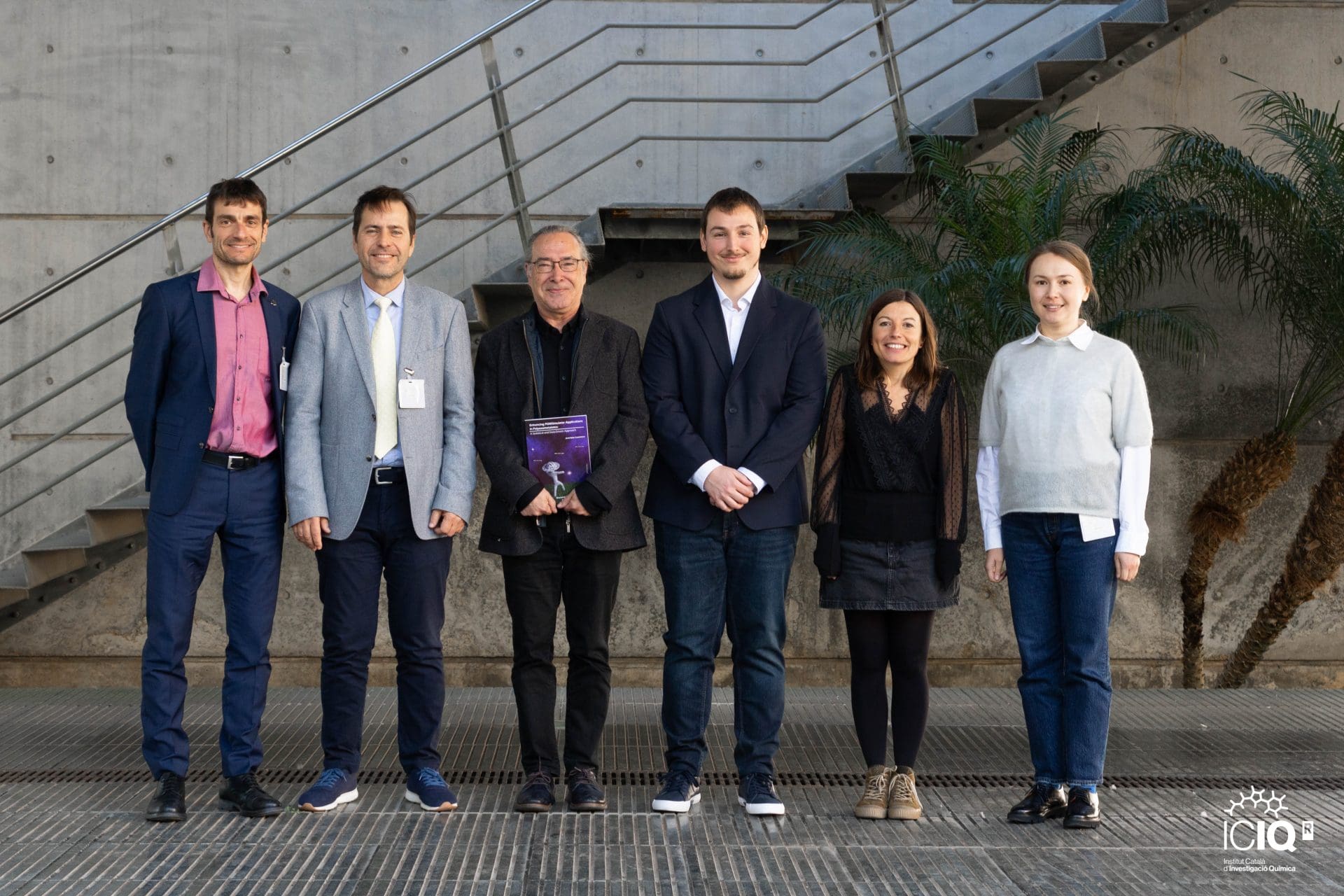
 20-12-2024
20-12-2024 
